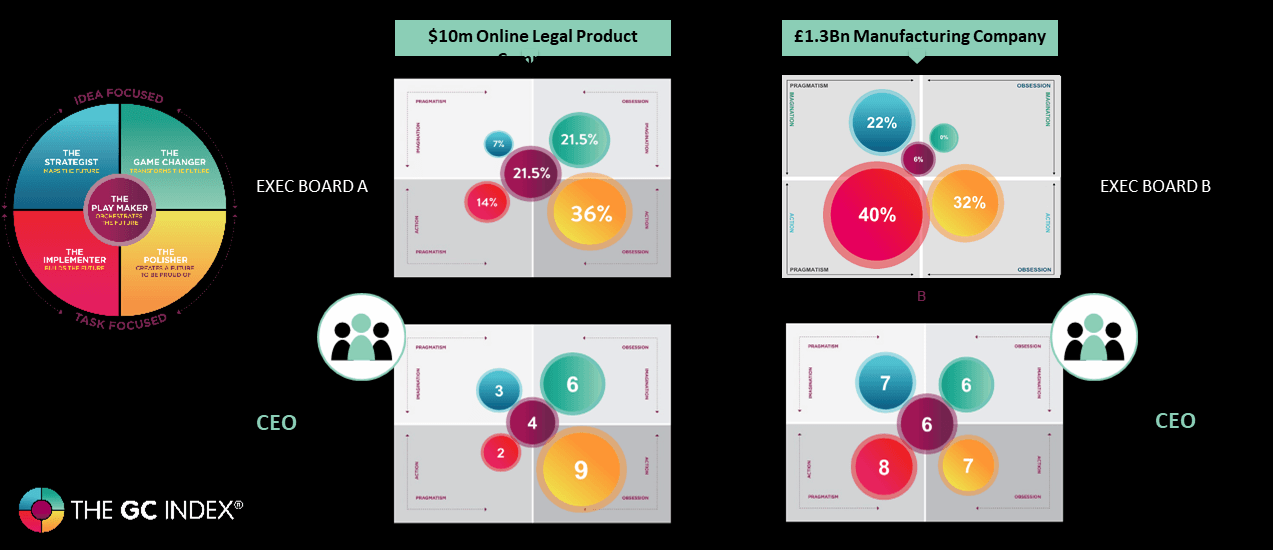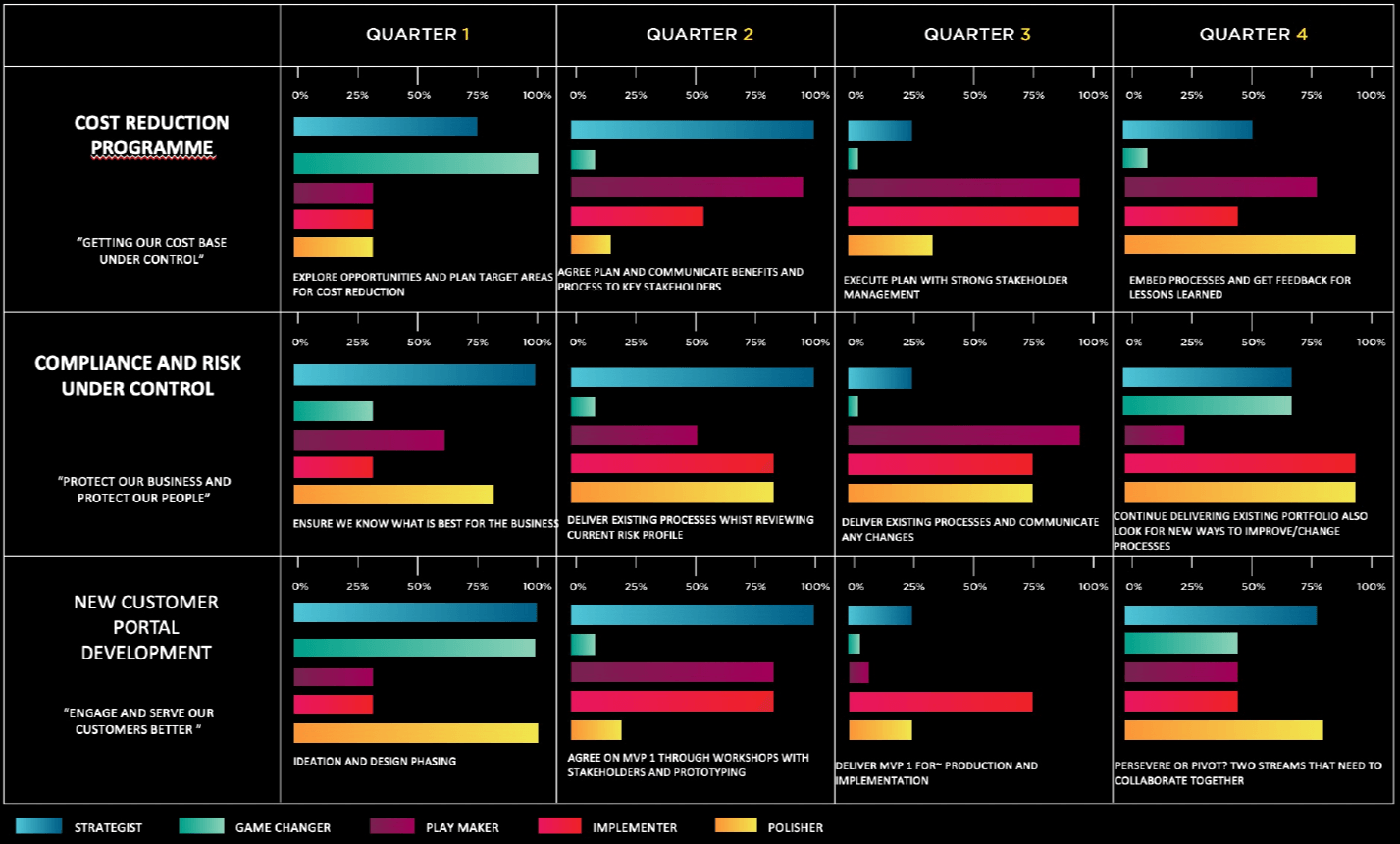Case Studies (using The GC Index®)
Explore our collection of case studies on this page:
For a deeper dive into our game-changing approach drives impactful outcomes and empowers organizations, feel free to return to the
parent page.
Case Study #1 – Leadership Insights
In these two sub-case studies within this case study, we focus on CEOs and Executive Boards in separate situations to demonstrate the valuable insights The GC Index® can provide. While the success of an organization can depend on various factors, including its strategic journey, these examples showcase the impact of The GC Index® in understanding people dynamics.
Before diving into each case individually, let's start with a little teaser:
- Which organization do you think is more successful?
- What insights can we derive from these CEOs, their Executive Boards, and the nature of their organizations?
To enhance your understanding and simulate the case studies, you may want to review the
definitions of the proclivities.

Let's evaluate your answers by expanding each section below.
Case Study #2 – Change Management
When managing significant change initiatives, it is crucial to recognize that they typically unfold over an extended period, spanning several quarters or even months. Each phase of the change process focuses on achieving specific outcomes aligned with the overarching strategic objective.
In the following examples, we will demonstrate how the natural energies of the team(s) provide assurance that the right balance is in place and that no apparent gaps exist. It is important to note:
- While having the right balance does not guarantee success, it serves as a valuable metric for monitoring progress and effectiveness.
- Depending on the size of the team(s), analyzing the constituent profiles of individuals becomes instrumental in identifying key resources based on their natural energies and contributions to the overall team dynamics.

